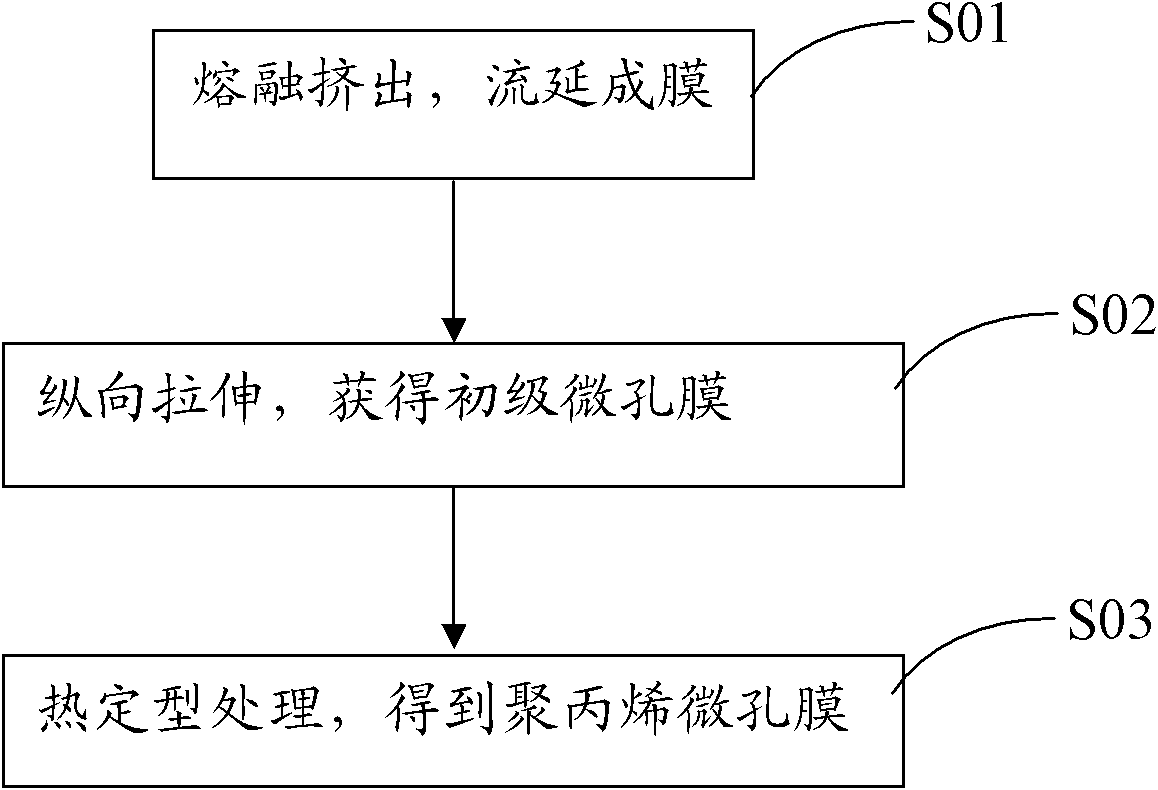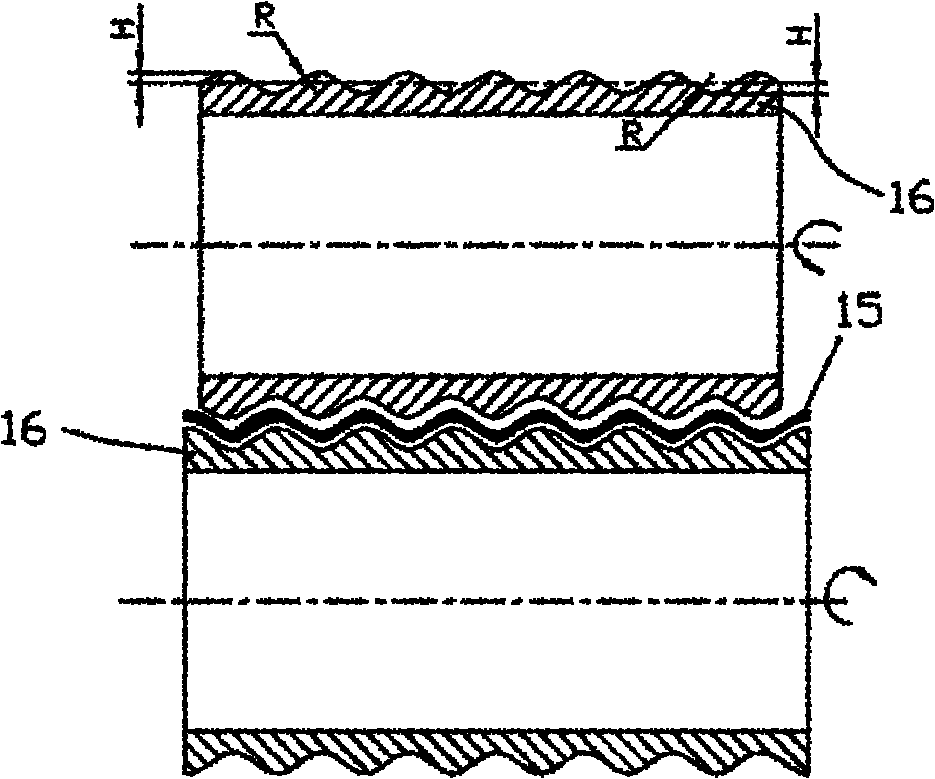Method for forming polyolefin microporous membrane and application thereof
A technology of polyolefin microporous film and polyolefin flow, which is applied in the field of polyolefin film manufacturing, and can solve problems such as difficulty in achieving air permeability
- Summary
- Abstract
- Description
- Claims
- Application Information
AI Technical Summary
Problems solved by technology
Method used
Image
Examples
Embodiment 1
[0038] Homopolypropylene with a melt index of 3.0g / 10min was used, melted and extruded by a single-screw extruder, and cast into a thick film. The extrusion temperature was 220°C, the temperature of the casting roll was 60°C, and the thickness of the cast thick film was 30 μm. It was then heat-treated in an oven at 150°C for 10 hours. The cold drawing temperature is 20°C, the cold drawing ratio is 20%, the hot drawing temperature is 140°C, and the hot drawing ratio is 120%. The heat setting temperature is 140°C, and the heat setting time is 20s. The two corrugated rollers are located in the middle of the 6 sizing rollers, the corrugated rollers have H / R=0.35, and the transverse stretching ratio is 1.2 times to obtain the final PP microporous membrane.
Embodiment 2
[0040] Homopolypropylene with a melt index of 3.0g / 10min was used, melted and extruded by a single-screw extruder, and cast into a thick film. The extrusion temperature was 220°C, the temperature of the casting roll was 60°C, and the thickness of the cast thick film was 30 μm. Then heat treatment in an oven at 150°C for 10 hours. The cold drawing temperature is 25°C, the cold drawing ratio is 20%, the hot drawing temperature is 140°C, and the hot drawing ratio is 120%. The heat setting temperature is 140°C, and the heat setting time is 20s. The two corrugated rollers are located in the middle of the 6 sizing rollers, the corrugated rollers H / R=0.1, and the transverse stretching ratio is 1.1 times to obtain the final PP microporous membrane.
Embodiment 3
[0042] Homopolypropylene with a melt index of 3.0g / 10min was used, melted and extruded by a single-screw extruder, and cast into a thick film. The extrusion temperature was 220°C, the temperature of the casting roll was 60°C, and the thickness of the cast thick film was 30 μm. Then heat treatment in an oven at 150°C for 10 hours. The cold drawing temperature is 25°C, the cold drawing ratio is 20%, the hot drawing temperature is 140°C, and the hot drawing ratio is 120%. The heat setting temperature is 140°C, and the heat setting time is 20s. Two corrugated rollers are located in the middle of the 6 sizing rollers, the corrugated rollers have H / R=0.6, and the transverse stretching ratio is 1.3 times to obtain the final PP microporous membrane.
PUM
| Property | Measurement | Unit |
|---|---|---|
| Melt index | aaaaa | aaaaa |
| Melt index | aaaaa | aaaaa |
| Thickness | aaaaa | aaaaa |
Abstract
Description
Claims
Application Information
 Login to View More
Login to View More - R&D
- Intellectual Property
- Life Sciences
- Materials
- Tech Scout
- Unparalleled Data Quality
- Higher Quality Content
- 60% Fewer Hallucinations
Browse by: Latest US Patents, China's latest patents, Technical Efficacy Thesaurus, Application Domain, Technology Topic, Popular Technical Reports.
© 2025 PatSnap. All rights reserved.Legal|Privacy policy|Modern Slavery Act Transparency Statement|Sitemap|About US| Contact US: help@patsnap.com



